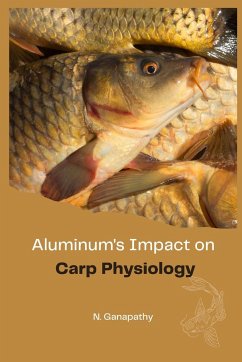Aluminum is one of the most abundant elements on Earth, found in a wide range of environments, including soil, water, and air. Its presence in aquatic systems has become a growing concern due to its potential toxic effects on aquatic organisms. Carp, one of the most commonly cultured freshwater fish species, are particularly susceptible to aluminum toxicity due to their physiology and habitat. In recent years, N. Ganapathy and colleagues have been investigating the impact of aluminum on carp physiology, focusing on its effects on biochemistry and histopathology. Their research has shown that exposure to aluminum can have a significant impact on the health of carp, leading to a range of biochemical and histological changes. One of the key findings of their research is that aluminum can accumulate in the tissues of carp, leading to damage to vital organs such as the gills, liver, kidney, and brain. Exposure to aluminum can also lead to oxidative stress, which can cause cellular damage and inflammation. This, in turn, can lead to a weakened immune system, making the fish more susceptible to disease and reduced survival rates. Furthermore, the accumulation of aluminum in the tissues of carp can affect their growth, reproduction, and behavior. Exposure to aluminum can disrupt the normal functioning of neurotransmitters and hormones, leading to changes in behavior and endocrine disruption. These effects can also have cascading effects on the entire aquatic ecosystem, as fish play a crucial role in the food chain. To address these issues, N. Ganapathy and colleagues have been investigating methods for monitoring and managing aluminum contamination in aquatic systems. Their research has highlighted the importance of prevention and treatment measures, including regulating aluminum levels in water and soil, and developing strategies to remove aluminum from contaminated sites. Overall, the research of N. Ganapathy and colleagues has shed light on the complex and potentially harmful effects of aluminum on carp physiology. Their work highlights the need for continued research and management efforts to minimize the impact of aluminum on freshwater ecosystems and the health of aquatic organisms.
